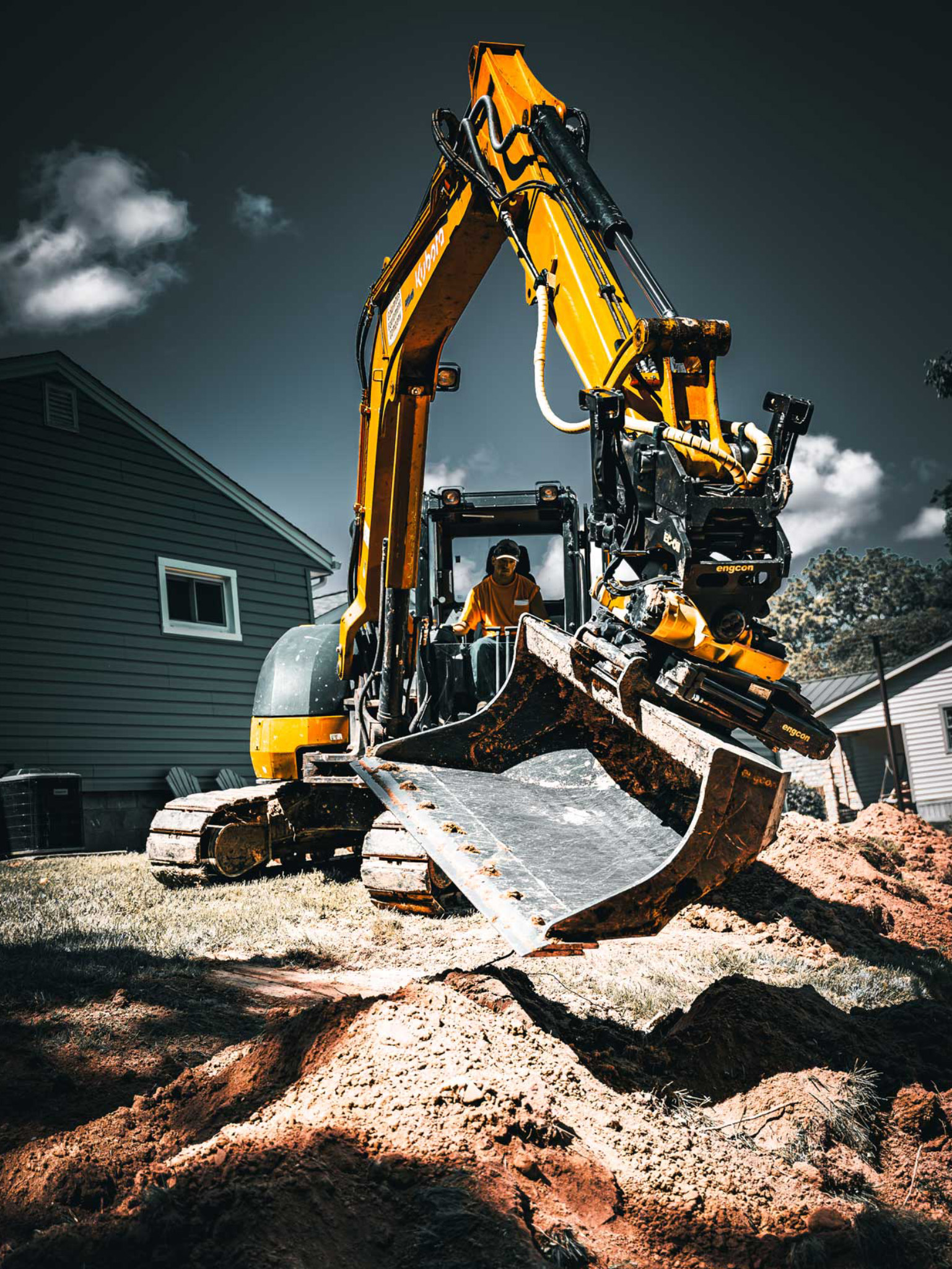Lancaster Excavation - Expert Excavation Solutions in Lancaster, OH
Lancaster Excavation - Expert Excavation Solutions in Lancaster, OH
Blog Article
Thorough Exploration: The Science Behind Superior Excavation Practices
From old hand tools to modern hydraulic excavators, the development of excavation methods has been a testimony to human resourcefulness and technical advancements. What truly establishes premium excavation methods apart is a deep understanding of geological concepts, coupled with the use of cutting-edge devices and approaches.
Evolution of Excavation Techniques
Throughout history, the advancement of excavation techniques has actually played an essential duty ahead of time building techniques and historical discoveries. From the fundamental tools made use of by our ancestors to the advanced machinery used in modern times, the progression of excavation methods has dramatically changed exactly how we approach various jobs.
In ancient times, manual work with fundamental devices such as wheelbarrows, pickaxes, and shovels was the primary technique of excavation. This labor-intensive process restricted the deepness and range of excavations, often leading to slow development and limited accessibility to particular sites. Nonetheless, as civilizations progressed, so did the techniques and tools used for excavation.
The Industrial Revolution marked a turning point in excavation practices with the introduction of steam-powered equipment. In contemporary times, modern technology plays an essential duty in excavation, with advancements like General practitioner systems, drones, and 3D scanning enhancing precision and effectiveness in the area.
Role of Technology in Excavation

The integration of innovative innovation has essentially reinvented the area of excavation, enhancing precision and performance to unmatched degrees - lancaster excavation. One of the crucial technological improvements that has actually dramatically influenced excavation techniques is the application of GPS systems.
Furthermore, the development of 3D modeling and simulation software has streamlined the planning process for excavation tasks. Drivers and engineers can now imagine the entire excavation process before damaging ground, determining possible challenges and maximizing workflow. Together with this, the application of drones in excavation tasks has actually helped with aerial studies, volumetric dimensions, and site inspections with unequaled speed and accuracy.
Geological Principles in Excavation
An understanding of geological concepts is important for making sure the structural stability and security of excavation sites. Geological aspects play a vital role in determining the usefulness and safety and security of excavation tasks (lancaster trenching). One crucial geological principle to take into consideration is the kind of soil or rock present at the site. Different soil kinds, such as clay, sand, or crushed rock, have varying levels of stability and need various excavation techniques. Cohesive dirts like clay may need added assistance to prevent collapses, while sandy soils might be prone to erosion throughout excavation.
Furthermore, the geological structure of the location, consisting of mistakes, fractures, and rock developments, need to be carefully examined to determine potential threats and difficulties. Excavating near geological fault or unsteady rock formations can cause instability and possible hazards. By performing extensive geological studies and analysis, excavators and designers can develop methods to reduce threats and make certain the effective completion of excavation projects. Inevitably, including geological principles right into excavation techniques is essential for accomplishing risk-free, reliable, and lasting results.

Most Recent Devices for Excavation
In the realm of excavation practices, modern technologies in tools have actually changed the efficiency and accuracy of excavation processes. Among the most current devices making waves in the industry is using drones geared up with innovative imaging innovation. These drones can give in-depth airborne surveys of excavation sites, using real-time information on topography and prospective hazards. This information aids in much better planning and decision-making during the excavation process.
An additional cutting-edge tool gaining popularity is the execution of 3D printing technology for producing custom-made excavation devices. This permits for the production of specialized devices that are tailored to the specific requirements internet of a project, raising efficiency and lowering downtime.
Additionally, advancements in products scientific research have actually brought about the growth of stronger and more sturdy excavation tools. septic ohio. Tungsten carbide-tipped excavator attachments, for instance, offer exceptional performance in tough ground conditions, improving performance on-site
Scientific research's Influence on Excavation Practices
Additionally, improvements in products scientific research have actually led to the development of more powerful, extra long lasting excavation devices and tools. For instance, making use of composite materials in shovels and miners has boosted their efficiency and longevity, ultimately enhancing performance on excavation sites. Furthermore, clinical research on dirt auto mechanics and geotechnical design has actually given important understandings into dirt behavior, permitting excavation experts to make informed decisions regarding excavation approaches and soil stabilization methods. On the whole, science remains to drive development and enhancement in excavation practices, making excavation tasks much more efficient, affordable, and sustainable.

Conclusion
In verdict, the evolution of excavation methods has been substantially influenced by developments in technology and a much deeper understanding of geological concepts. The most recent tools and tools made use of in excavation have actually boosted efficiency and precision in the area. The application of scientific expertise has actually considerably boosted excavation practices, bring about more reliable and lasting methods for digging deep into various kinds of products.
In investigate this site the realm you could try these out of excavation methods, contemporary technologies in devices have revolutionized the efficiency and precision of excavation processes. By leveraging clinical concepts, the excavation sector has actually been able to dramatically improve efficiency, precision, and security in excavation procedures. GPR allows excavation groups to non-invasively scan and map subsurface frameworks, utilities, and prospective threats, enabling them to prepare excavation projects with higher precision and decreased danger of accidents.
In addition, clinical study on dirt auto mechanics and geotechnical engineering has provided important understandings into dirt actions, permitting excavation professionals to make educated choices pertaining to excavation techniques and soil stabilization techniques. Generally, scientific research proceeds to drive development and enhancement in excavation methods, making excavation tasks more efficient, cost-efficient, and lasting.
Report this page